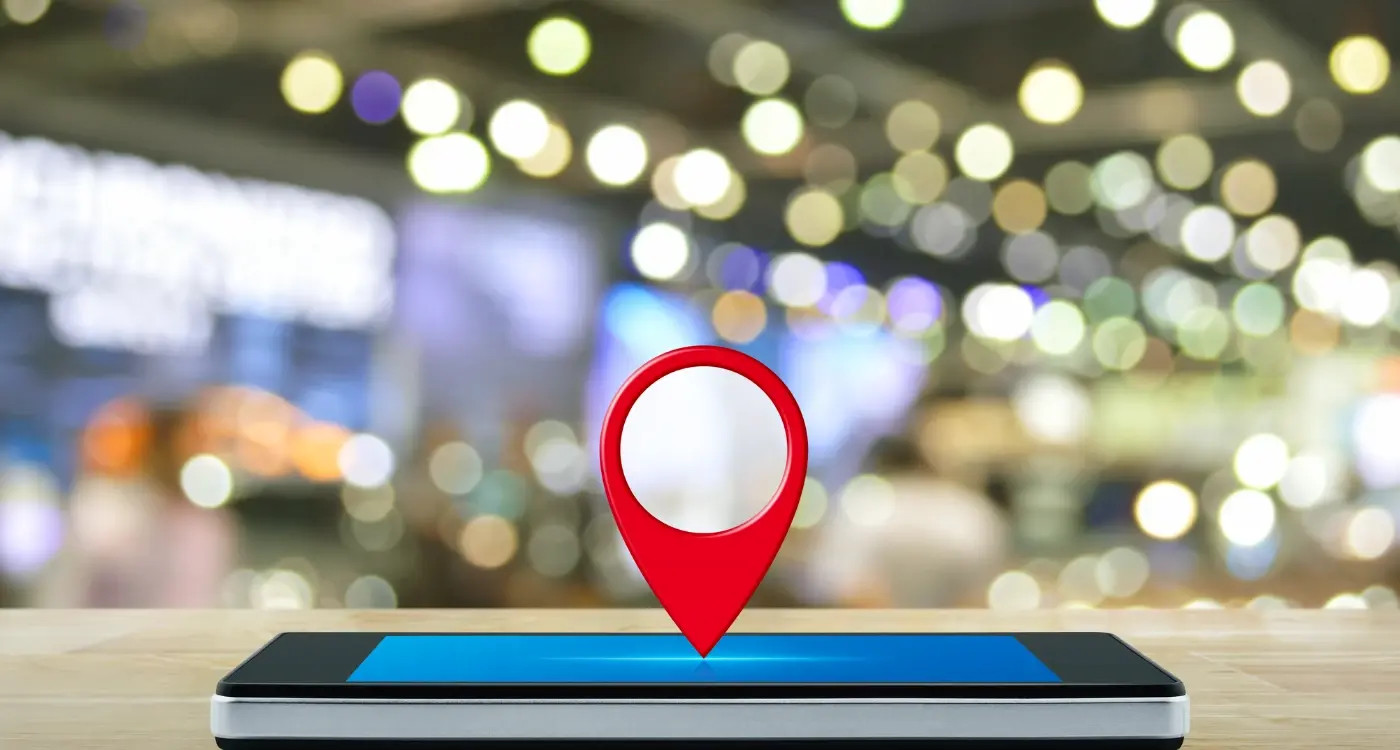Which Phones Support AR Apps And Which Don't?
Over 1.5 billion people worldwide own smartphones that can run augmented reality apps—but here's the catch: millions of users still can't figure out why their phone won't support their favourite AR experiences. I've been working in mobile app development for years, and I see this confusion constantly. People download an AR app, try to use it, and get frustrated when it doesn't work properly or won't even install.
The truth is, not all phones are created equal when it comes to augmented reality. Your device needs specific hardware components, the right operating system, and enough processing power to blend digital content with the real world seamlessly. Some phones handle AR brilliantly; others struggle or can't run AR apps at all.
Understanding device support for augmented reality isn't just about having the latest phone—it's about knowing which components make AR possible and which don't
That's exactly what this guide will help you understand. We'll look at which iPhones and Android devices support AR technology, what hardware requirements your phone needs, and why some older devices simply can't keep up. Whether you're a developer planning an AR app or someone wondering why certain apps won't work on your phone, you'll have clear answers by the end.
Understanding AR Technology and How It Works
AR stands for Augmented Reality—which sounds fancy but is actually quite simple to understand. Think of it as adding digital objects to the real world through your phone's camera. When you open an AR app, your phone uses its camera to see what's around you, then places computer-generated images on top of that view. The magic happens when these digital objects appear to sit naturally in your real environment.
What Makes AR Work on Your Phone
Your phone needs several things working together to make AR happen. The camera captures what you're looking at, whilst sensors called accelerometers and gyroscopes track how you're moving your phone. The phone's processor—the brain of the device—takes all this information and works out where to place digital objects so they look realistic.
Most modern phones also have something called depth sensors or use clever software to understand how far away things are. This helps the AR app know whether a digital object should appear in front of or behind a real table, for example. Without this depth understanding, AR objects would just float around randomly rather than sitting properly in your space.
The Software Side of Things
The apps themselves use special AR frameworks—Apple's ARKit for iPhones and Google's ARCore for Android phones. These frameworks do the heavy lifting, handling all the complex calculations needed to track your movement and place objects accurately. This is why not all phones can run AR apps; they need both the right hardware and software support to make everything work smoothly together.
iPhone Models That Support AR Apps
Apple was one of the first companies to really push augmented reality into the mainstream with their ARKit technology. They made it quite simple for developers like us to create AR experiences, but there's a catch—not all iPhones can handle AR apps. The good news is that most iPhones from the past few years are perfectly capable of running AR applications.
The iPhone 6s and iPhone 6s Plus were the first models to support ARKit when Apple launched it. From that point onwards, every new iPhone model has included AR support. This means the iPhone SE (first generation), iPhone 7, iPhone 7 Plus, iPhone 8, iPhone 8 Plus, iPhone X, iPhone XR, iPhone XS, iPhone XS Max, and all subsequent models work brilliantly with AR technology.
Why These Models Work
These iPhones have the A9 processor or newer, which provides the computing power needed for AR processing. They also include the motion sensors and camera technology that AR apps need to track movement and overlay digital content onto the real world.
- iPhone 6s and 6s Plus (A9 chip)
- iPhone SE 1st generation (A9 chip)
- iPhone 7 and 7 Plus (A10 chip)
- iPhone 8 and 8 Plus (A11 chip)
- iPhone X, XR, XS, XS Max (A11/A12 chips)
- All newer iPhone models
If you're planning to develop an AR app, test it on older supported devices like the iPhone 6s to make sure it performs well across all compatible models—not just the latest ones.
The iPhone 6 and earlier models simply don't have the processing power or sensor technology needed for AR apps. If you're targeting iPhone users with your AR app, you can confidently support devices from the iPhone 6s onwards.
Android Phones Compatible with AR Technology
Android phones have really embraced AR technology, though not all models can handle it. Google's ARCore platform is the main system that powers AR apps on Android devices—it's Google's answer to Apple's ARKit and it works brilliantly when you have the right hardware.
Most flagship Android phones from Samsung, Google, OnePlus, and Huawei support ARCore. The Samsung Galaxy S series from the S7 onwards can run AR apps, as can the Galaxy Note series. Google's own Pixel phones are naturally compatible, starting from the original Pixel. OnePlus devices from the OnePlus 3T forward work well with AR apps too.
Mid-Range Options That Work
You don't need to spend a fortune to get AR capabilities. Many mid-range phones like the Samsung Galaxy A series, Xiaomi's Redmi and Mi phones, and some Motorola devices support ARCore. The key is having decent cameras and sensors—front and rear cameras need to work together to track your movements and map the space around you.
Checking Your Phone's Compatibility
The easiest way to check if your Android phone supports AR is to look for ARCore in the Google Play Store. If it's available for download, your phone can run AR apps. You can also check Google's official ARCore supported devices list, which gets updated regularly as new phones are tested and approved.
If you're looking for cutting-edge AR experiences, keep an eye on the latest Android devices that often feature enhanced AR capabilities and improved sensors designed specifically for augmented reality applications.
Older Phones That Cannot Run AR Apps
After years of working with mobile apps, I've seen plenty of disappointed clients who discovered their target audience couldn't actually use their shiny new AR app. The reality is that many phones simply don't have what it takes to handle augmented reality properly—and that's a bigger problem than most people realise.
Why Older Phones Struggle
Most phones released before 2017 lack the processing power and sensors needed for AR. They might have cameras, but they're missing depth sensors, gyroscopes, or the computational muscle to track objects in real-time. iPhones older than the 6s are completely out of luck, whilst Android phones without ARCore support—which includes most devices from 2016 and earlier—simply can't run modern AR applications.
The processing requirements for AR are massive compared to regular apps, and older hardware just wasn't designed for this kind of workload
The Real Impact
This creates a real challenge for app developers. You're potentially excluding millions of users who haven't upgraded their phones yet. Budget Android devices and older flagship models make up a significant portion of the market, particularly in developing countries where people keep their phones longer. When planning an AR app, you need to consider whether your audience actually has compatible devices—otherwise you might be building something that most people can't use.
Despite these challenges, AR technology continues to evolve and will likely solve many of these compatibility issues as hardware becomes more affordable and powerful.
Hardware Requirements for AR Performance
After years of developing AR apps, I can tell you that the hardware inside your phone makes or breaks the AR experience. You might have the latest iPhone or Samsung Galaxy, but if certain components aren't up to scratch, your AR apps will struggle—or worse, won't work at all.
The processor is the brain of AR operations; it needs to handle complex calculations whilst your phone tracks your movements and overlays digital content onto the real world. Most phones need at least a mid-range processor from the last three years to run AR smoothly. Your phone's memory (RAM) is just as important—AR apps are memory-hungry beasts that need at least 3GB of RAM to function properly, though 4GB or more is better.
Camera and Motion Sensors
Your phone's camera quality directly affects how well AR apps can "see" the world around you. The camera needs to capture clear images quickly so the AR software can understand what it's looking at. Motion sensors like the gyroscope and accelerometer track how you're moving your phone, which is crucial for keeping digital objects in the right place.
Storage and Graphics
AR apps take up considerable storage space—some need several gigabytes just to install. Your phone's graphics processor (GPU) handles all the visual rendering, so older or basic graphics chips will struggle with complex AR scenes.
For developers looking to create AR experiences, understanding these hardware requirements is crucial. Getting insights from AR development experts can help you optimise your app for different hardware configurations.
- Processor: Mid-range or better from last 3 years
- RAM: Minimum 3GB, preferably 4GB+
- Storage: At least 32GB available space
- Camera: Good quality rear-facing camera
- Sensors: Gyroscope, accelerometer, magnetometer
Operating System Compatibility and Updates
Getting your operating system right is probably one of the most overlooked aspects of augmented reality support—and trust me, I've seen plenty of clients scratch their heads wondering why their shiny new AR app won't work on their phone. The truth is, your device might tick all the hardware boxes but still fall short when it comes to software compatibility.
For iOS devices, you'll need iOS 11 or later to run ARKit-powered applications. That's Apple's AR framework, and it's been the backbone of most iPhone AR experiences since they launched it. Android users need Android 7.0 (API level 24) or higher for ARCore support, though some manufacturers have their own AR solutions that might work with slightly older versions.
Why Updates Matter So Much
Here's where things get interesting—and slightly frustrating. Even if your phone technically supports AR, running an outdated operating system can seriously limit your options. New AR features, performance improvements, and bug fixes come with each update. I've seen perfectly capable phones struggle with basic AR tasks simply because they're running software that's two years out of date.
Always check your phone's software version before downloading AR apps. Many AR performance issues can be solved with a simple system update.
Manufacturer Variations
Android manufacturers love to put their own spin on things, which means AR support can vary wildly between brands. Samsung, Google, and OnePlus generally offer excellent AR compatibility, whilst some budget manufacturers might not support ARCore at all—even on newer devices. This fragmentation is one of the key differences when comparing iOS vs Android development platforms.
- iOS: Requires iOS 11+ for ARKit support
- Android: Needs Android 7.0+ for ARCore compatibility
- Regular updates improve AR performance and add new features
- Some manufacturers may not support standard AR frameworks
However, some companies are working to address AR's usability challenges. Google's approach to AR shows how major tech companies are trying to make AR more accessible across different devices and operating systems.
Future of AR Device Support
The mobile world moves fast—and AR support is getting better every single day. I've watched this technology grow from those early clunky attempts to something that actually works properly on most phones. What excites me most is how AR is becoming normal rather than special.
More Phones Will Support AR
Phone makers are adding AR support to cheaper devices all the time. The sensors and cameras needed for AR used to cost a fortune, but now they're getting much cheaper to make. This means AR won't just be for expensive flagship phones anymore; mid-range and budget phones are starting to include proper AR support too.
Better AR Performance Coming
New phone processors are being designed with AR in mind from the start. Companies like Qualcomm and Apple are building special chips that handle AR calculations much faster than before. Your phone won't get as hot when running AR apps, and the battery will last longer too.
The cameras in new phones are getting smarter as well—they can track objects and understand depth much better than older models. Some phones now have special depth sensors that make AR placement incredibly accurate. What used to be wobbly and unreliable is becoming rock solid.
Within the next few years, I expect most new phones to support AR properly. The technology is moving from being a nice bonus feature to something people expect their phone to do. This shift reflects broader mobile app development trends where AR capabilities are becoming standard rather than exceptional.
Conclusion
After working with countless clients over the years, I've seen firsthand how device support can make or break an AR project. The good news is that most modern smartphones—whether iPhone or Android—can handle AR apps pretty well these days. If you've got an iPhone 6s or newer, you're sorted. For Android users, anything with ARCore support (which covers most phones from the last few years) will do the trick.
The tricky bit comes when you're trying to reach the widest possible audience. You'll need to decide whether to target only the latest devices with the best AR capabilities, or build something that works on older phones too. This trade-off between features and reach is something we discuss with every client who wants to build AR apps.
What I find exciting is that augmented reality device support keeps getting better. New phones are getting more powerful processors, better cameras, and improved sensors—all the things that make AR experiences smoother and more realistic. Even mid-range phones now have decent AR capabilities, which means more people can use your app.
If you're planning an AR app, don't get too caught up in the technical specifications. Focus on creating something useful that solves a real problem, then worry about which devices can run it best.
Share this
Subscribe To Our Learning Centre
You May Also Like
These Related Guides

Which Apps Should Use Games and Which Ones Shouldn't?

Which Location Services Work Best for Indoor Navigation?



